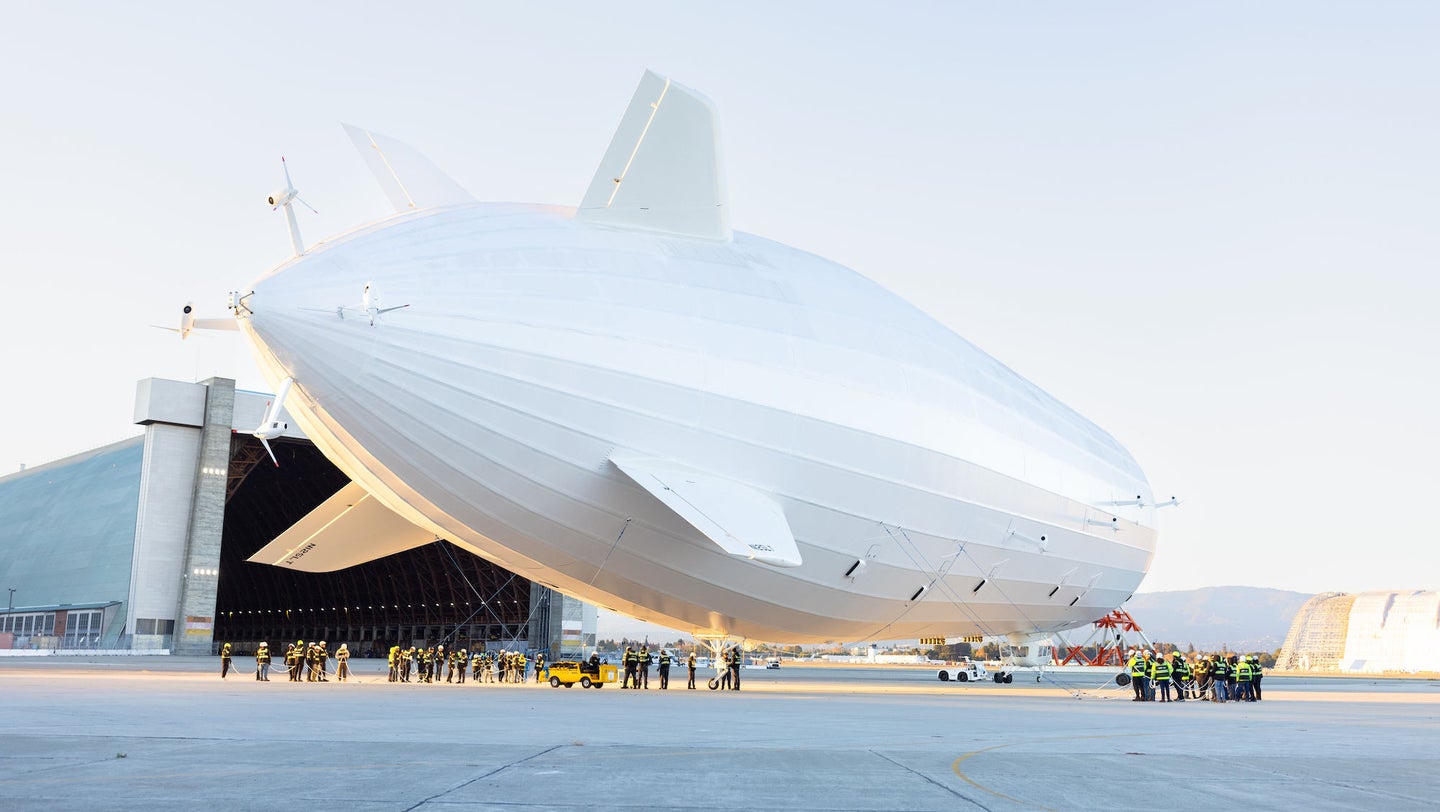Giant electric airships could one day deliver humanitarian aid
Check out this prototype electric airship that could soon start flight tests.

This week, LTA Research revealed Pathfinder 1, a prototype electric airship, to the public. According to TechCrunch, the company founded by Sergey Brin will spend the next year putting its airship through airworthiness testing at Moffett Field, home of NASA’s Ames Research Center, and out over the seas of the southern San Francisco Bay. If all goes well, airships could one day be used for climate-friendlier air travel, cargo transport, and humanitarian aid missions.
Pathfinder 1, LTA Research’s first prototype, is 400 feet long and 66 feet wide. That’s more than 150 feet longer than an Airbus A380, and is apparently the largest aircraft to take to the skies since the ill-fated Hindenburg in the 1930s. (Though, at over 800 feet long, the Hindenburg would dwarf Pathfinder 1.)
Instead of explosive hydrogen, Pathfinder 1 uses helium as its lighter-than-air lift gas. The airship has 13 rip-stop nylon gas bags inside its rigid carbon-fiber and titanium frame that are continuously monitored using LIDAR to ensure the airship is properly balanced, buoyant, and performing well. LTA is obviously angling for nothing to go wrong, but just in case, the surface of the airship is coated with Tedlar, a laminated, strong, lightweight, and, crucially, non-flammable material.
[Related: The biggest hot air balloon in the US was built to carry skydivers]
While the helium gets Pathfinder 1 in the air, it moves around thanks to 12 electric motors that are powered by diesel generators and batteries. The motors can drive the airship at up to 75 mph and can rotate from +180º to -180º to allow it to maneuver carefully. The pilots steer using a joystick and fly-by-wire system that automatically integrates with sensor feedback data to control all the motors.
Despite its massive size, Pathfinder 1 will only be able to carry a relatively small amount of cargo. Depending on how tests go and the specific requirements of the situation, LTA expects the airship to have a payload of between 4,400 and 11,000 pounds. By contrast, a C-17 Globemaster can carry almost 180,000 pounds. The advantage of an airship, then, isn’t so much in what it can do, but in what other aircraft can’t.
LTA Research highlights the humanitarian angle. As its FAQs explain, “airships will have the ability to complement, and even speed up, humanitarian disaster response and relief efforts, so that many more lives can be saved. Airships do not require aviation infrastructure like airstrips and landing zones, allowing them to deliver food, equipment, supplies, and other life-saving aid to areas impacted by natural disasters.” It also suggests that if cell towers are knocked down, airships could hover in the area equipped with the necessary radio equipment and get service back online.
[Related: RIP Loon, Google’s balloon-based cellular network]
For now though, Pathfinder 1 has much simpler objectives: get through flight testing. The FAA’s airworthiness certificate mandates that it is tethered to a mobile mast for ground testing, before conducting low-level flights at up to 1,500 feet. If all goes well in California, it will then be taken to the historic Goodyear Airdock where LTA Research is already developing Pathfinder 3, another prototype that, at 590 feet long, will have even more potential for carrying humanitarian aid.